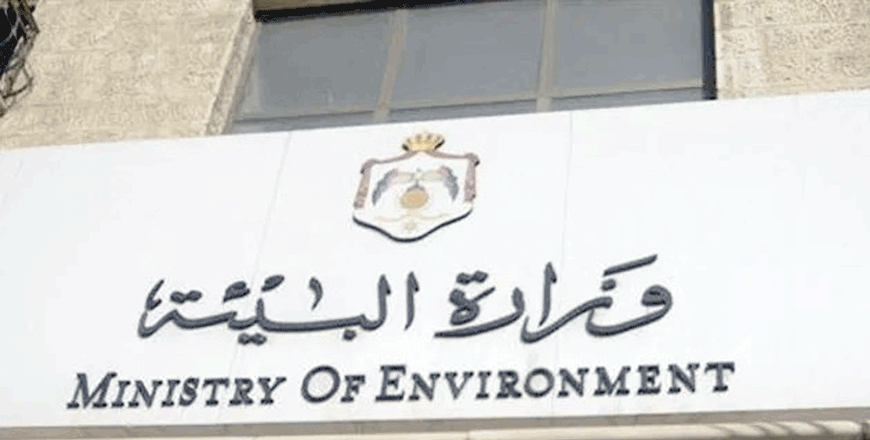You are here
Green finance key for Jordanian industrial sector’s green transition — study
By Rana Tayseer - Feb 02,2023 - Last updated at Feb 03,2023

Representative image (Photo courtesy of unsplash/Zbynek Burival)
AMMAN — Banks need to develop inclusive green finance products for the industrial sector, rather than solely renewable energy products, in order to create a vibrant green finance market and enable the industrial sector’s green transition, according to a recent study.
The study, titled “Jordan’s Green Industrial Transition: What Role Can Green Finance Play?”, is implemented by Deutsche Gesellschaft für Internationale Zusammenarbeit GmbH (GIZ) and the Frankfurt School of Finance & Management.
The study, launched during a recent event organised by the EDAMA Association for Energy, Water and Environment, details the potential demand and supply of green finance in the industrial sector.
According to the research, renewable energy investments are not perceived to be risky, as the impact is seen directly after installation in almost certain cost savings. On the other hand, other green projects are also perceived as risky due to limited familiarity.
Banks need to consider more flexible terms and conditions when developing green finance, with more competitive interest rates and longer tenors, according to the study.
The study said a review of the banks’ internal strategies, policies and procedures and proper marketing is needed to achieve the desired results with green finance products.
For the industrial sector, the study said it is important to bridge the knowledge gap on how to adopt green technologies and solutions that reduce climate-related risks and other environmental dangers, and increase their production efficiency.
Increased awareness about banking products available to enable green energy investments is also important within the industrial sector to improve access to finance through better understanding of conditions to fulfil, or rules and procedures to follow to request credit, as well as after credit has been approved.
It is also important to raise institution’s capacity to become bankable and eligible to obtain credit facilities, if not already so, in terms of proper bookkeeping, holding bank accounts and building credit histories.
For policy-makers, the study called for developing incentives for green investments to the industrial and financial sectors, aligned with current strategies on energy, water and waste management.
It said the Central Bank in Jordan should revise its subsidised fund to include green loans, rather than only renewable energy. It is also recommended to streamline loan processes and increase loan ceilings for larger industrial enterprises and increase group limits for enterprises that are parts of groups. Sectoral dialogue between banks and industrial firms should be improved, the study observed.
The study also recommended the development of a green business ecosystem of providers of green business development services and vendors for green technologies.
This can be achieved by gathering information about green vendors and service providers to be made available to the industrial sector by chambers and other sector organisations or through increased monitoring by government entities, it said.
President of the Jordan Environment Union Omar Shoshan said that any strategy for green financing in Jordan should focus on increasing accessibility to finance.
“We need to build a strong national programme for green financing with the cooperation of all banks that can create jobs and stimulate the economy,” Shoshan told The Jordan Times.
According to the study, the industrial sector remained a key pillar of the Jordanian economy, contributing 22.4 per cent of GDP and providing 14.2 per cent of total employment with 227,000 jobs in mostly low-to-medium skilled positions in 2021.
With its indirect impact on transportation, storage, retail and banking, the industrial sector is estimated to contribute as much as 40 per cent to the GDP, the study said.
Industry in Jordan was not affected by COVID-19 as severely as other sectors such as tourism and transport, nevertheless, year-over-year output contracted by as much as 6.9 per cent (JD1,481 million to 1,378 million) and 5.3 per cent (JD1,842 million to 1,745 million) in Q2 and Q3 of 2020 and it took until Q3 of 2021 for the sector’s output to return to pre-pandemic levels.
The sector's contribution to the current account with a share of 59 per cent of exports amounting to JD5.8 billion also improves the foreign exchange reserves and supports the stability of the Jordanian dinar's peg against the US dollar, the study said.
For industrial firms to remain competitive despite recent challenges and the increased negative effects of climate change, it is crucial to transition towards more environmentally friendly and resource-efficient production methods, according to the study.
As the world’s second most water scarce country, the limited availability of water resources has considerably restricted Jordan’s industrial sector, the study noted.
The industrial sector remains almost entirely dependent on oil and gas imports for its energy needs, accounting for about a quarter of total energy consumption and thus having a “significant indirect share of greenhouse gas emissions”.
As Jordan’s green finance market is in its infancy, the banking sector currently lacks tailored products for the industrial sector’s investments in environmentally friendly and resource-efficient production technology, the study said.
However, banks are recognising the need to gear asset portfolios towards more sustainable investments and have also started to launch some initiatives, the study noted.
Despite the absence of dedicated green financial products for the industrial sector in Jordan, demand for green business development services (Green BDS) have allowed for some degree of investigation concerning how projects related to environmentally friendly and resource-efficient production methods are implemented and financed, as well as the obstacles they encounter.
Related Articles
AMMAN — Green Action in Enterprises (GAIN) project is to implement environmentally friendly and resource-efficient production methods in Jor
AMMAN — The "Oak Chains" housing project has received the Excellence in Design for Greater Efficiencies (EDGE) certification by the World Ba
AMMAN — The Ministry of Environment has recently prohibited the use of dark brown plastic bags in a step towards preserving the environment,
















